Please support Game Informer. Print magazine subscriptions are less than $2 per issue
Top Of The Table – Pandemic Legacy
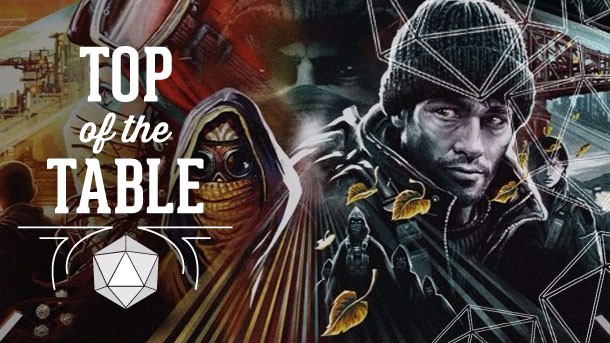
Pandemic Legacy Season 2 is rolling out to players as we speak, following up on one of the most acclaimed and wildly entertaining board games of the last several years. If you've already played Season 1, you hardly need me to tell you why you should be excited about its sequel, but you might be in for a surprise about just how different this follow-up really is. If you didn't play Pandemic Legacy: Season 1, you're in for a treat. While either game can be tackled and enjoyed on its own, I strongly recommend snagging a copy of the first game (one of our selections for the best tabletop games of 2015) and enjoying the full ride, and then continuing into the fun of the second season, which has just released.
Pandemic Legacy (in both seasons) is a game about discovery, secrets, and sudden twists. As such, from here on out, I won't be spoiling significant events or gameplay that is part of that experience, beyond talking about the way that each season's story opens, or elements that are apparent from the rulebook. If even that is more detail than you wish, you may wish to jump ship after this paragraph. I'll simply pass along that these two board games are both well worth the price of admission, and different enough to justify playing both. Take that info, do with it what you will, and stop reading here. If you'd like to know a bit more, read on. I'll do my darndest not to ruin anything.

Season 1 and 2 each have two box covers; the interior contents are identical
Rather than my normal Top of the Table recommendation of a single game, today I wanted to look at the phenomenon of Pandemic Legacy as represented by both games. Few board games have true sequels in the way we've come to expect in mediums like movies or video games, in which the stories and events of the first game carry over into new revelations in a subsequent installment. Viewed together, Pandemic Legacy: Seasons 1 and 2 present a fascinating arc filled with drama in storytelling and constantly evolving gameplay, both built to be played cooperatively with 2-4 players. Legacy games demand that players accept the consequences of their actions, face new situations that arise from wins or losses, and confront new situations and goals over time. Both seasons of Pandemic Legacy define the concept of the legacy experience, asking gaming groups to kill off player characters, tear up old cards, add stickers into the rule book, open top-secret dossiers, and sometimes completely change the entire objective of subsequent sessions. And it does it all on top of the bedrock of a time-tested game design that is itself a fantastic experience.
For many years over the last decade, the original Pandemic has been my go-to game for introducing new players to the hobby of board gaming. While there are plenty of wonderful party games, family games, and other experiences that provide a fun evening with friends, the entryway into more thematic and strategic games can be a challenging transition. I've always found Pandemic an ideal fit for that goal. The cooperative experience uses a real-world setting, an identifiable threat, and cooperative mechanics that keep everyone at the table engaged. As doctors and scientists, players work together to conquer a series of diseases sweeping the globe, treating and hopefully curing these epidemics while managing outbreaks and other challenges. One deck of cards reveals cities as they get infected, and another deck provides cards that allow players to move about the board and cure diseases. The game has a relatively short playtime, but surprisingly engaging globe-trotting action, and is a great one-off adventure with friends. To this day, I'd still recommend that original game (and its expansions) as an ideal introduction to engaged hobby boardgaming.
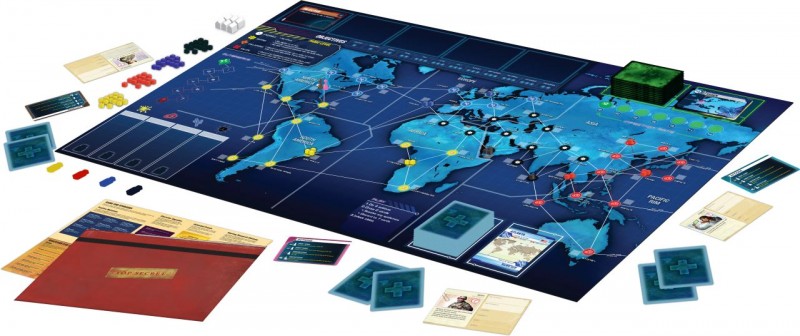
Season 1 features a familiar map of the world, but one that will face big changes over the course of many sessions
Pandemic Legacy: Season 1, designed by Rob Daviau and Matt Leacock (Pandemic's original designer), takes that formula, and over many sessions morphs it into something new. Like in the original Pandemic, the board shows a map of the world and many of its biggest cities, and challenges players to move around to contain and eventually cure multiple diseases. Ensconced within the game box, numerous sealed packages hold new game components that only enter the game under certain conditions. New playable characters show up to confront changed threats on the board. Existing characters carried over from previous sessions begin to show signs of wear, bearing the mental trauma of the tough experiences they’ve endured. As players succeed or fail, the broader worldwide government adjusts its funding for the treatment effort. And no matter how successful you are, the seriousness of the pandemic on the international stage intensifies. More than once, as a new rule or disease mutation went into effect, I would look around the table at my fellow players, and we would wonder aloud how we could possibly be expected to win.
Next Page: The post-apocalyptic setting of Season 2, and the thrill of challenging cooperative play
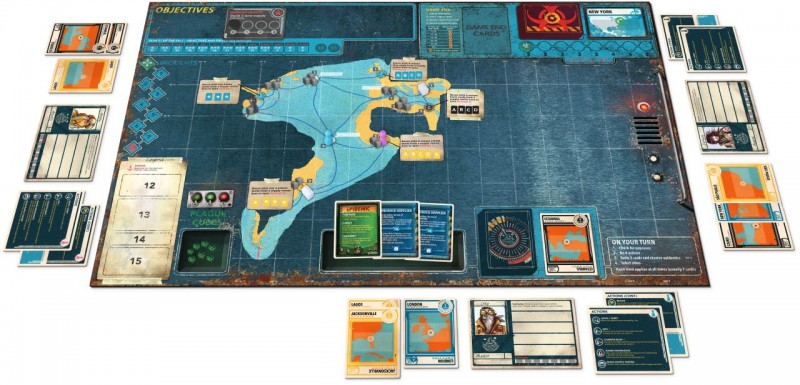
In the beginning, Season 2's board represents the small remnants of civilization
Season 2 is a standalone experience, but it nods to the first game in important ways. No matter how your playthrough of Season 1 ends, Season 2 makes some presumptions about the state of the world several decades later, and transforms from a modern-day drama to a post-apocalyptic survival scenario. 71 years have passed since humanity was nearly wiped out by disease, and now only a small segment of civilization remains. Players take on the role of characters in ocean-based havens, where food, medicine, and other supplies are prepared and shared with the small bastions of civilization still on land. Dangerous armed groups are pillaging the supplies. We’ve lost contact with most of the world, and as the first session begins, players can only see on the board a few coastal cities on either side of the Atlantic.
Where Season 1 hews closely to the gameplay rules of the original Pandemic, Season 2 goes much further afield. While core mechanics like player and infection card decks keep things familiar, many other elements have been turned on their head. Only one disease threatens the world, but players must juggle supplies to the various cities to keep that disease at bay, often making hard decisions about which cities to support, and which are too far gone to save. The lost network of cities must also be reconnoitered and brought back onto the grid – exploration slowly reveals new aspects of the map through stickers that are permanently applied to the board. Your character takes a risk every time he or she delivers supplies to beleaguered city, as exposure to the disease means you must scratch off, lotto ticket-style, a box on your character card, and somewhere along the way, that scratched-off box indicates your character’s death. The thrill of discovery is high, accompanied by the constant fear that everything is falling apart.
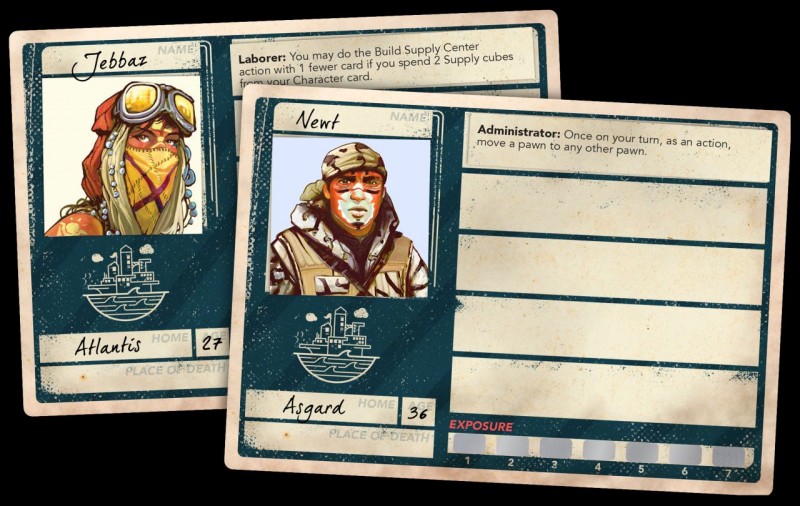
In Season 2, players shape everything about their character's creation, including name, job, and even a sticker for their portrait
Season 1 and Season 2 are completely different games, but they share traits that keep the franchise unified. Managing risk, calculating how many turns it might take to complete a project, and taking advantage of unique character skills are all big parts of the game. But more than anything, the thing I love about these two games is the teamwork engendered with its players. In either version, Pandemic Legacy demands constant conversation and cooperation between the players at the table. Even newcomers to the game quickly realize the jobs and skills of their unique character might be essential to win the game. How can everyone contribute in the way that is most valuable? Victory is frequently separated from defeat by a very narrow margin, even if the whole team makes good choices on every turn.
That’s the other thing that unites these two games – challenge. Pandemic Legacy is not a game you should expect to win every time. Loss and failure is common, and it’s virtually impossible to have a completely “clean” playthrough of multiple sessions; characters die, cities fall, and players begin to evolve their goals from, “we’re going to return the world to its original state” and instead start to try to imagine, “How are we going to keep at least some part of humanity alive?”. Even when everyone is critically thinking and planning ahead, sudden changes of fortune are common, demanding that the team adjust their tactics. Failing after the team does almost everything right can feel punishing, but it also makes those skin-of-your-teeth wins more satisfying. In a certain Season 1 game I recall with fondness, my group managed to win on the very last card draw. By happenstance, the nature of the shuffled deck meant that there was a roughly 50/50 chance in that final moment that we’d get the card we needed to complete our weirdly complex victory plan. The right card was pulled, the necessary player flew from Hong Kong to Atlanta, and the game was won. And our success was more meaningful because its effects carried over into the following session.
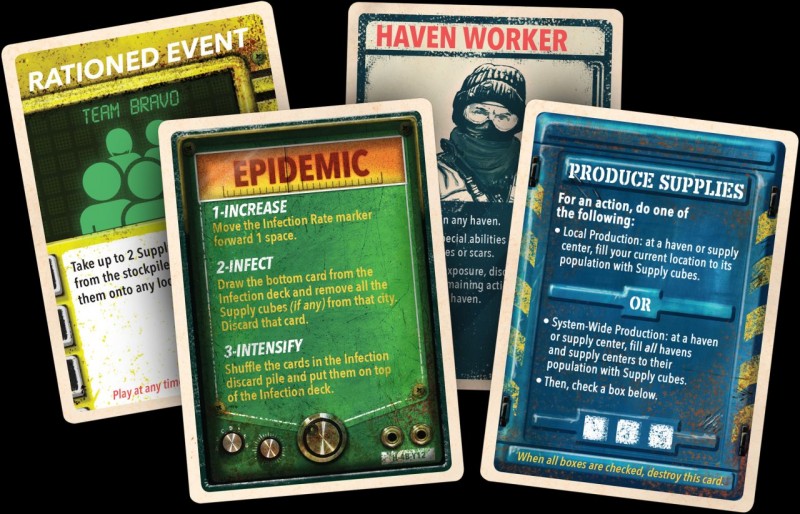
In both seasons, decks of card introduce an element of chance that is out of the control of the players
Now that two seasons have released, Pandemic Legacy increasingly feels like one of the defining board game experiences of recent years, melding storytelling, choice and consequence, and cooperative play dynamics into two hard-to-resist packages. I can’t recommend these games more highly, but I’ll reiterate that they are at their best if you play Season 1 before tackling the insanity of weathering the world’s end in season 2. You should also be aware that both seasons have two available box covers; in ease case, the contents of those boxes are identical, and you should pick up whichever one has your preferred cover art.
Pandemic Legacy is a poster child for the way tabletop gaming has grown and changed in the last decade, now encompassing an incredibly diverse array of experiences. If you’d like to start digging into this branch of the gaming hobby more regularly, feel free to peruse the backlog of Top of the Table articles by clicking on the banner below. If you’d like some personalized recommendations or advice on your home tabletop game group, drop me a line via email or Twitter, and I’ll do my best to help.











